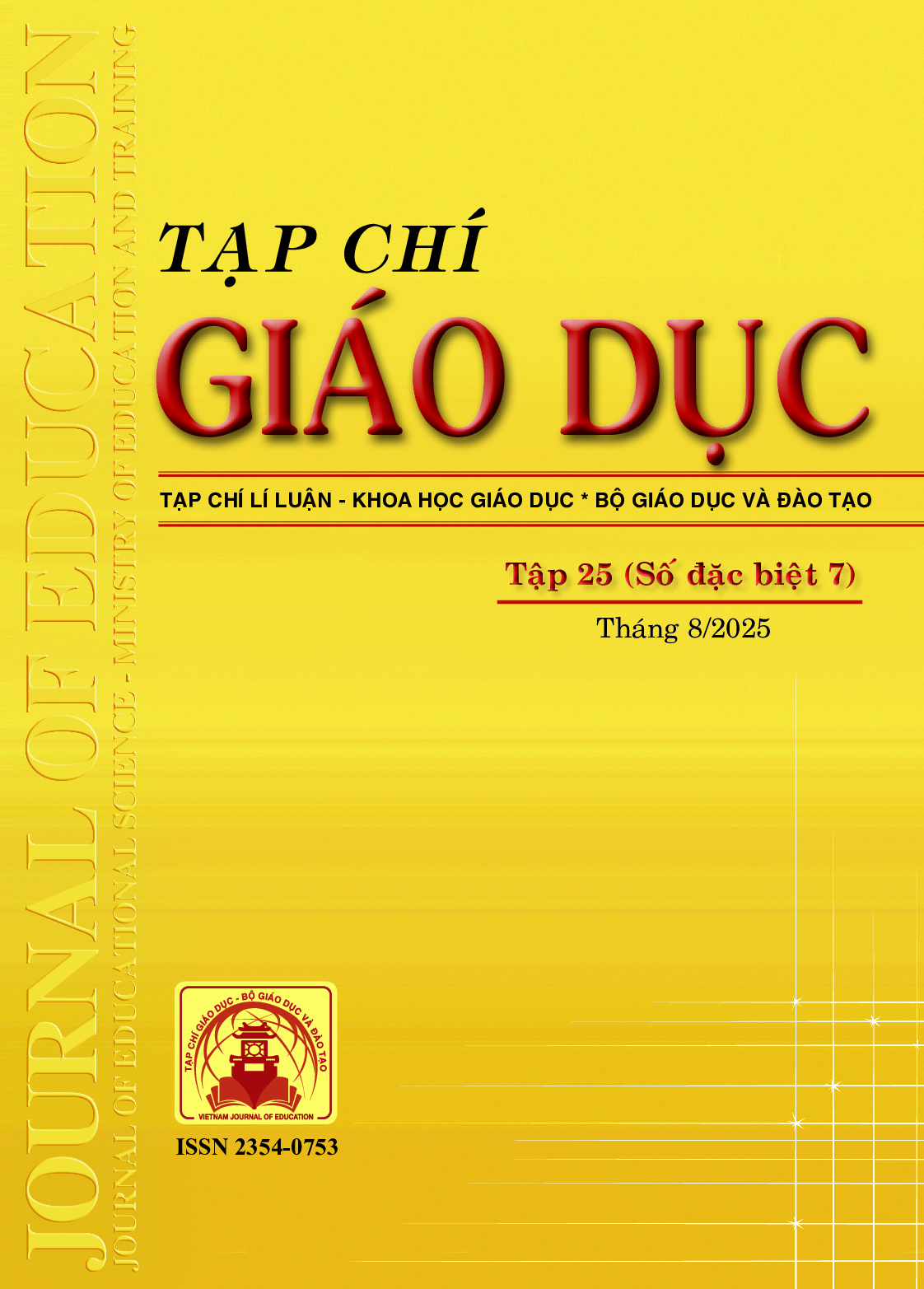Quy trình xây dựng trợ giảng AI hỗ trợ giáo viên trong dạy học sinh học ở trường phổ thông
Tóm tắt
The proactive adaptation of teachers to technological progress is considered a decisive factor for the development of education in the digital age. This study presents the design of BioAI-an augmented AI Chatbot used as a teaching assistant for Biology teachers, while providing accurate feedback to personalize student learning. 44 teachers and 414 students were surveyed, in which 82.6% of the teachers expressed a willingness to integrate BioAI into their teaching practices and 91.55% of students rated the practical value of this tool in supporting learning highly. Research has proposed a four-step process for developing an AI Chatbot: (1) Identifying the purpose and usage requirements of the Chatbot; (2) Determining the database; designing the AI Chatbot; (3) Consulting with experts; (4) Publishing and managing the Chatbot. Based on this proposed framework, BioAI has been designed and implemented in practical applications. The findings confirm the feasibility and effectiveness of applying enhanced AI in biology education and propose the broader deployment of BioAI in education to foster students’ self-directed learning competencies and promote pedagogical innovation.
Tài liệu tham khảo
Bộ GD-ĐT (2018). Chương trình giáo dục phổ thông môn Sinh học (ban hành kèm theo Thông tư số 32/2018/TTBGDĐT ngày 26/12/2018 của Bộ trưởng Bộ GD-ĐT).
Chakraborty, C., Pal, S., Bhattacharya, M., Dash, S., & Lee, S. S. (2023). Overview of Chatbots with special emphasis on artificial intelligence-enabled ChatGPT in medical science. Frontiers in Artificial Intelligence, 6, 1237704.
Chudleigh, S. (2025). How to use Chatbots for higher education in 2025. Botpress Blog. https://botpress.com/blog/chatbot-for-education
Đỗ Thị Tố Như, Nguyễn Thị Ngọc Tuyền, Lê Khắc Quynh (2025). Khai thác và sử dụng một số công cụ AI trong dạy học môn Khoa học tự nhiên. Tạp chí Giáo dục, 25(5), 36-41.
Haristiani, N., Danuwijaya, A. A., Rifai, M. M., & Sarila, H. (2019). Gengobot: A Chatbot-based grammar application on mobile instant messaging as language learning medium. Journal of Engineering Science and Technology, 14(6), 3158-3173.
Hien, H. T., Cuong, P. N., Nam, L. N. H., Nhung, H. L. T. K., & Thang, L. D. (2018). Intelligent assistants in higher-education environments: The FIT-EBot, a Chatbot for administrative and learning support. In Proceedings of the 9th International Conference on Information and Communication Technology (pp. 69-76). https://doi.org/10.1145/3287921.3287937
Jung, H., Lee, J., & Park, C. (2020). Deriving design principles for educational Chatbots from empirical studies on human-Chatbot interaction. Journal of Digital Contents Society, 21(3), 487-493. https://doi.org/10.9728/dcs.2020.21.3.487
Kooli, C. (2023). Chatbots in education and research: A critical examination of ethical implications and solutions. Sustainability, 15(7), 5614. https://doi.org/10.3390/su15075614
Lê Thị Cẩm Tú, Nguyễn Khoa Nam (2023). Xây dựng và sử dụng Chatbot AI trong hỗ trợ giải bài tập phần Sóng - Vật lí 11 trung học phổ thông. Tạp chí Tâm lí - Giáo dục, 31(04), 228-232.
Lin, C. C., Huang, A. Y., & Yang, S. J. (2023). A review of ai-driven conversational chatbots implementation methodologies and challenges (1999-2022). Sustainability, 15(5), 4012.
Morandin-Ahuerma, F. (2022). What is artificial intelligence?. International Journal of Research Publication and Reviews, 3(12), 1947-1951.
Phan Mạnh Chung (2024). Tích hợp trí tuệ nhân tạo (AI) vào quá trình giảng dạy: Cơ hội và thách thức tại các trường đại học Việt Nam. Tạp chí Thiết bị Giáo dục, 2(321), 14-15.
Trần Quốc Giang, Trương Tấn Đạt (2024). Tích hợp ChatGPT trong quản lí và giảng dạy tại các trường tư thục: Thực trạng và giải pháp. Tạp chí Khoa học và Công nghệ, Đại học Thái Nguyên, 229(12), 440-448.
Đã Xuất bản
Cách trích dẫn
Số
Chuyên mục
Giấy phép

Tác phẩm này được cấp phép theo Ghi nhận tác giả của Creative Commons Giấy phép quốc tế 4.0 .












